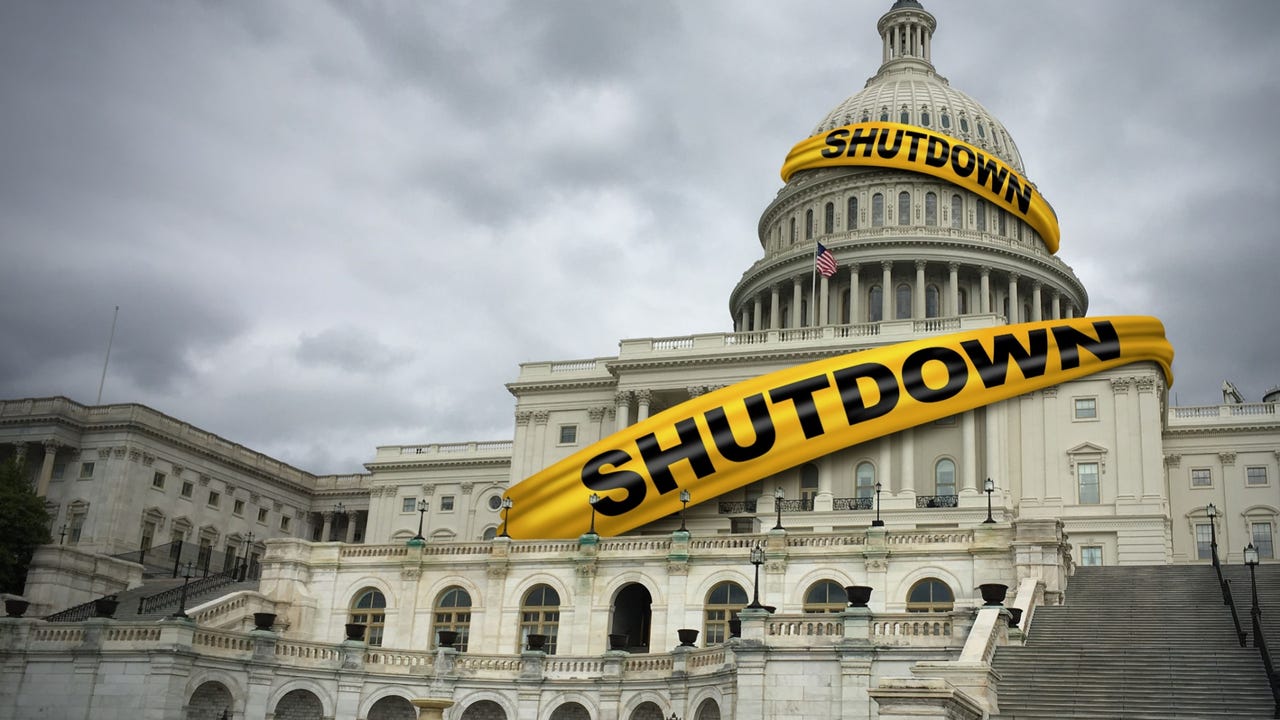
source: Lightspring via Shutterstock
Any prolonged US federal government shutdown could have wide-ranging consequences for the nation's cybersecurity posture, with the biggest immediate concern being a disruption in cyber threat intelligence sharing between the private sector and government.
Other major concerns include the US Cybersecurity and Infrastructure Security Agency's (CISA) continued ability to execute its mission and potential exposures at federal agencies forced to release contractors and third parties on whom they currently rely for cybersecurity.
A Potential Setback for Cyber Threat Intel Sharing?
The shutdown, which began on Oct. 1 at 12:01 a.m., coincided with the lapsing of the Cybersecurity Information Sharing Act of 2015 (CISA 2015), after Congress failed to reauthorize the bill before its Sept. 30, 2025, sunset date.
CISA 2015 provided important legal protections for companies that shared threat data in good faith, shielding them from liability related to privacy or antitrust concerns. Security experts widely consider the statute vital for encouraging the voluntary exchange of cyber threat indicators such as malware signatures and attack patterns between the private sector and federal, state, and local governments.
If the shutdown stalls or delays efforts to renew the law, the impact on intel sharing could be significant at a time US entities are under mounting threats from state-backed adversaries, cybercriminal gangs, and hacktivists.
Related:Can Shadow AI Risks Be Stopped?
"The importance of the Cybersecurity Information Sharing Act of 2015 for US national security cannot be overstated," says Crystal Morin, cybersecurity strategist at Sysdig. "Without legal protections, many legal departments would advise security teams to pull back from sharing threat intelligence, resulting in slower, more cautious processes."
Legal departments would likely advise their security teams to scale back or halt sharing altogether, given the loss of liability protections and Freedom of Information Act (FOIA) shields. That shift would reduce the flow of high-fidelity, threat insights and hamper the ability for organizations stop adversarial campaigns before they escalate, she says. "Instead of real-time information sharing, a lapse would likely cause more cautious, delayed, and limited exchanges, weakening the momentum that CISA built over the last eight years."
Randolph Barr, chief information security officer (CISO) at Cequence Security, says CISA 2015 provided a mechanism for security professionals and defenders to collaborate more openly with each other against adversaries who freely share knowledge to amplify their attacks. "That imbalance hasn't gone away, but CISA gave us a mechanism to close the gap, enabling defenders to collaborate in ways that were previously out of reach," Barr says. If CISA fails to renew, "security teams would be forced to fall back on their independent feeds, siloed intelligence, and their own interpretations of potential attacks," he says. That would slow down detection, limit context, and reduce the collective resilience industry has built over the past decade, Barr adds.
Related:As Incidents Rise, Japanese Government's Cybersecurity Falls Short
Mass Furloughs and Staff Impacts
The lockdown could also lead to mass furloughs at CISA and impede the agency's ability to perform critical functions, like threat analysis, incident response and support for private sector partners, that many have come to rely on in recent years. Guidance that the US Department of Homeland Security (DHS) issued a few days before the shutdown indicated CISA would furlough 65% of its employees — or 1,651 people — in the event of a funding lapse.
A reduction in workforce at CISA could temporarily limit proactive threat-hunting and slow incident response efforts, warns Ensar Seker, CISO at SOCRadar. It could also reduce the effectiveness of national-level coordination across government and private sectors. "The net effect would be fewer eyes on the threat landscape at a time when adversaries constantly probe for weaknesses," Seker says.
Related:Exposed Docker Daemons Fuel DDoS Botnet
In addition to CISA employees being furloughed, there's a good chance that all contractors working in cyber positions for federal agencies will be sent home as well, says Mike Hamilton, field CISO of Lumifi Cybersecurity. These are people that are critical to getting vulnerabilities patched and responding to incidents, he says.
"When a vulnerability is announced and a patch released by a vendor for a product that is exposed to the Internet, both nation-states and criminal groups will scan federal exposures and identify vulnerable products and exploit them to compromise those agencies," Hamilton predicts. "The lack of analysts monitoring events and a team to respond will likely result in these actors becoming embedded in the networks. At a minimum, this puts confidential communications and agency operations at risk."
Some also expect an increase in phishing and other forms of social engineering tied to the government shutdown. Most of the activity is likely going to consist of stealing credentials and other sensitive data from vulnerable and likely anxious furloughed workers. "We'll likely see an uptick in tactics related to HR/payroll/benefits, such as fake forms or identity verification requests, or early notice for return to work before the public announcement of the shutdown ending," predicts Brandon Potter, chief technology officer (CTO) at ProCircular. Email subjects such as "Urgent payroll update," "Furlough confirmation," or "Action required to receive furlough benefits" are going to be some likely lures, he says.
The scams will be designed to harvest credentials and capture multifactor bypass tokens and likely use lookalike domains to increase credibility. Potter says, "I wouldn't put it past threat actors to piggyback vishing alongside these phishing emails, making phone calls to increase the legitimacy of the email and the request."
Federal agencies, Potter advises, should review their incident response plan, and run a practice scenario, if possible, to gauge their readiness to respond to incidents while waiting for federal assistance. They need to establish and communicate the authorized channels for shutdown information, such as HR, payroll, and benefits, and remind employees on phishing red flags and general security awareness. "Focus on identity," Potter says. "Increase monitoring of identity threats and verify, for the 100th time, that all accounts have [multifactor authentication] enabled, especially those with privileged access to systems or networks."
.png)
 3 weeks ago
6
3 weeks ago
6




